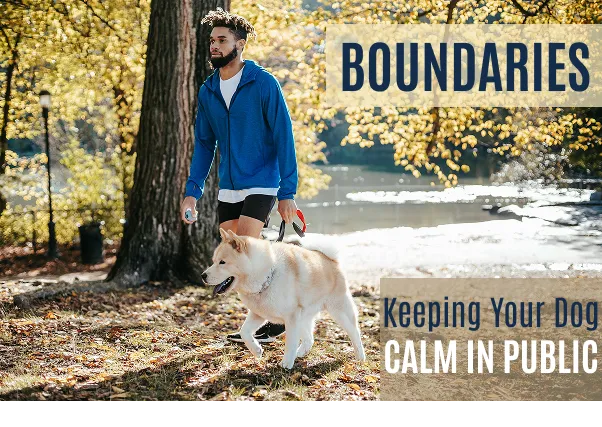
Stop Chaotic Outings! Train Your Dog to Be Calm in Public
Taking your dog out in public should be a calm, enjoyable experience—not a stressful one. Whether you’re walking through downtown Providence, enjoying the last Attleboro Farmers Market of the 2025 season on October 18, or just grabbing coffee with a friend, your dog’s behavior matters. A calm, well-mannered dog not only makes outings more pleasant for you but also keeps your dog safe and comfortable.

Start Young: Teach Boundaries Early
If you want a dog that’s confident and composed in public, training begins the moment they join your family. One of the most common mistakes people make is allowing strangers to pet their puppy or letting them greet every dog they see on leash.
• Don’t let strangers pet your dog. While this might feel unfriendly, it’s actually one of the best ways to help your dog stay focused and relaxed. Every new person becomes a source of excitement if your dog learns that strangers = attention. Instead, teach your dog that their job is to calmly stay with you, not to socialize with everyone around them.
• Skip on-leash dog greetings. Dogs meeting face-to-face while leashed often leads to tension, pulling, or even fights. Save playtime for safe, off-leash environments like a backyard or dog park. In public, your dog’s attention should be on you—not on every passing dog.
By consistently enforcing these boundaries, you’re teaching your dog that the world can be busy and exciting, but their role is to remain calm and connected with you.
Public Time Isn’t Playtime
It’s important to remember that there’s a time and place for play and socialization—but a busy sidewalk, store, or event isn’t it. Think of public outings as “work mode” for your dog. Just like kids learn when it’s time to play on the playground versus sit quietly in class, dogs thrive when they understand the difference between social time and focus time.
What We Can Learn from Service Dogs
Real service dogs are some of the best examples of how dogs should behave in public. They are trained from a young age not to seek attention, not to greet other dogs, and not to be distracted by noises or crowds. Instead, they learn that their job is to stay calm, focused, and by their handler’s side.
This doesn’t happen overnight—it’s the result of consistent training, boundaries, and socialization in the right way. Service dogs are gradually exposed to public spaces with guidance and structure, not with free-for-alls of attention and play.
While your pet dog may not need to reach service-dog-level obedience, you can absolutely borrow these training principles:
• Keep greetings private, not public.
• Reward calm focus on you.
• Expose your dog to busy environments gradually.
• Reinforce manners consistently.
If you'd like to learn more, we share tips for handling many of these issues on our FAQs and Dog Training Glossary pages.
The Payoff: A Calm, Confident Dog
By starting early and setting boundaries, you can raise a dog who’s comfortable in public without being overwhelmed or excitable. Your dog doesn’t need to greet every person or sniff every dog to be happy—they need your calm leadership and clear expectations.
When your dog learns that public time is calm time, you’ll both enjoy the freedom of outings without the stress. And who knows—you might even inspire others with how well-mannered your dog is in public!
